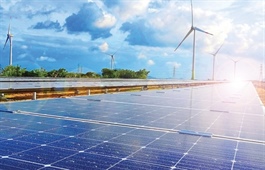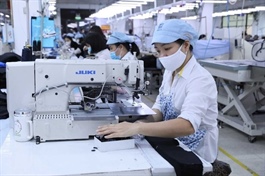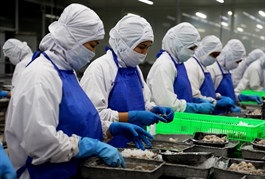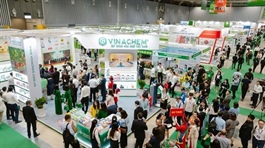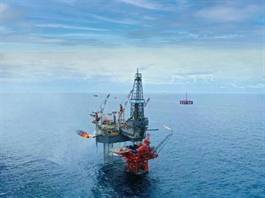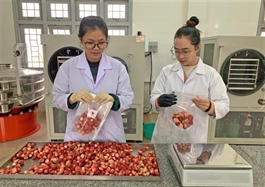American groups take mantle in LNG-to-power initiatives
American groups take mantle in LNG-to-power initiatives
The growing race among enterprises to invest in power projects in Vietnam is poised to significantly increase imports from various markets, with the United States emerging as a key supplier.
At its AGM on April 22, PV Power chairman Hoang Van Quang highlighted that 2025 marks a critical year for the company. PV Power is concentrating its resources on the Nhon Trach 3 and 4 power plants, Vietnam’s first liquefied natural gas (LNG) power schemes featuring advanced technology and high-efficiency, set to be commercially operational by the end of 2025.
“We are allocating all available human and financial resources to ensure the Nhon Trach plants are completed on schedule and meet the highest performance standards,” Quang stated.
Beyond Nhon Trach, the company is progressing on projects aligned with the revised Power Development Plan VIII, including Quynh Lap and Quang Ninh LNG power plants, and exploring partnerships in projects like the Ca Mau expansion.
Meanwhile, during its AGM held on April 24, Vingroup announced energy as a new business pillar. Chairman Pham Nhat Vuong emphasised that Vietnam faced a shortage of green energy, outlining the group’s ambitious plans to address this gap.
“Vietnam urgently needs additional power sources, especially in the north. Although LNG is not completely green, it is significantly cleaner than traditional energy sources. We must act quickly to build an LNG plant to ensure energy security for the region,” Vuong said.
Vingroup has registered to develop around 25.5GW of renewable and LNG energy capacity by 2030, aiming to expand it to 52.5GW by 2035. In addition, the group is preparing to invest in a 4.8GW LNG plant, which Vuong said could “greatly alleviate the risk of power shortages” in the north of Vietnam.
According to the revised plan, by 2035, Vietnam’s gas-fired power capacity is projected to surpass 51,000MW, with over 36,000MW coming from LNG imports. This marks a sharp increase from the current 7,900MW sourced mostly from domestic gas fields in the Cuu Long and Nam Con Son basins, whose production is declining.
As a result, importing LNG becomes critical to ensuring energy security. More than 10 LNG power projects are currently in development, totalling close to 16,400MW in planned capacity.
Vietnam’s LNG demand surge also aligns with government policy. Minister of Industry and Trade Nguyen Hong Dien stressed that LNG-to-power offers a balanced solution between sustainable energy transition and supply security. However, this requires synchronised development of LNG receiving terminals, regasification facilities, and transmission networks, alongside stable, internationally aligned policies for electricity and gas pricing and power purchase agreements.
However, experts warn that Vietnam could face significant bottlenecks in realising its LNG ambitions without timely and synchronised development of LNG infrastructure including import terminals, storage and regasification facilities, pipeline networks, and expanded transmission grids.
Investment must not only focus on building large-scale LNG ports such as Cai Mep and Thi Vai but also on establishing a national pipeline system, enhancing grid interconnectivity to absorb new power capacity, and upgrading facilities for downstream industries. Inadequate infrastructure could lead to supply chain disruptions, higher logistics costs, and delayed project operations, undermining the intended energy security and transition goals.
Currently, Vietnam’s LNG imports, mainly from the UAE, Kuwait, South Korea, Indonesia, and Malaysia, are estimated at 3.13 million tonnes in 2024, worth approximately $2.04 billion. However, rising demand will further shift attention towards the US, the world’s largest LNG producer.
In March, PV GAS signed MoUs with ConocoPhillips and Excelerate Energy for long-term LNG supply. These agreements are expected to secure stable LNG sources to meet Vietnam’s escalating electricity demand. PV GAS targets nine million tonnes of LNG imports per year by 2030 and 15 million tonnes by 2035, valued at about $7.2 billion annually.
The private sector is also active. US-based Nebula Energy’s subsidiary AG&P LNG acquired a 49 per cent stake in the Cai Mep LNG terminal in the southern province of Ba Ria-Vung Tau. The $500 million terminal has an initial capacity of three million tonnes per year, expandable to six million tonnes, and will supply LNG to power plants and industries across southern Vietnam.
Moreover, US suppliers are also making inroads through technology and equipment. General Electric (GE) has supplied high-efficiency gas turbines and related systems for the Nhon Trach plants. GE Vernova turbines, known for high efficiency rates, will likely feature in upcoming schemes such as Quang Ninh LNG, where PV Power is actively involved.
John Rockhold, chairman of the Vietnam Business Forum’s Power and Energy Working Group, said the US remains a leader in LNG exports, with terminals achieving a combined capacity of 92.9 million metric tonnes per year as of September 2024.
“Exports are projected to grow by 15 per cent in 2025, potentially exceeding 14 billion cubic feet per day, signalling steady growth in both production and global demand,” he said. “With Vietnam’s growing need for stable and cleaner energy sources, US LNG is well-positioned to play a major role in Vietnam’s energy future.”
At the November 2024 US-Vietnam Annual Business Summit, American energy leaders discussed opportunities to transfer advanced carbon reduction technologies alongside LNG imports to Vietnam, paving the way for a more sustainable energy transition.
“With dozens of LNG projects advancing and a growing appetite for stable, diversified energy supplies, Vietnam’s future energy landscape is being reshaped with US LNG playing an increasingly central role,” added Rockhold.
- 09:00 10/05/2025




